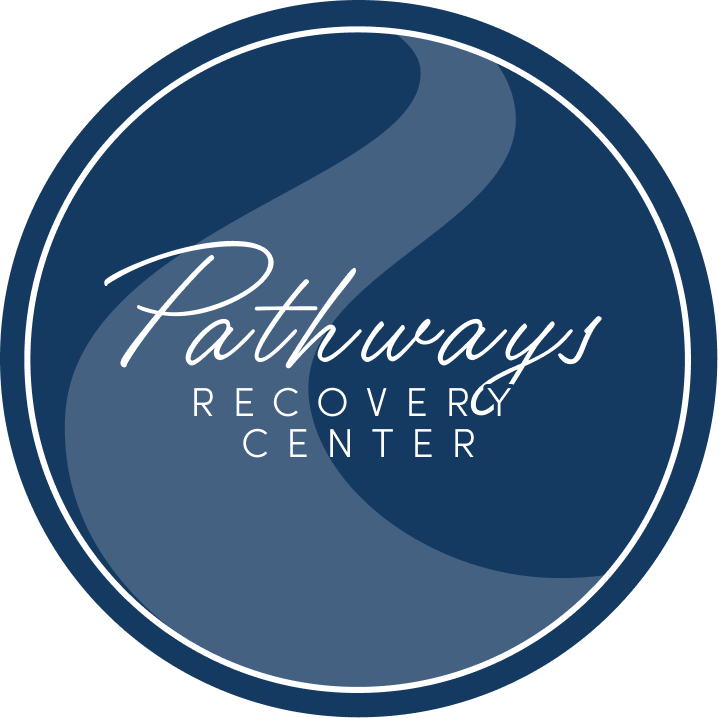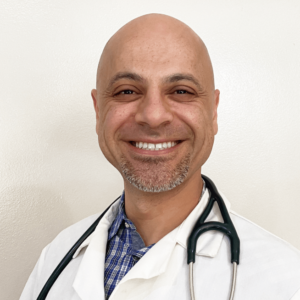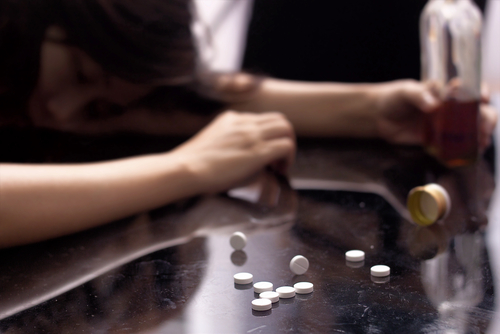Vyvanse, a prescription medication commonly used to treat attention deficit hyperactivity disorder (ADHD) and binge eating disorder (BED), has garnered attention for its effectiveness in managing these conditions. But many people still ask, is Vyvanse a controlled substance? The answer is yes—Vyvanse is classified as a Schedule II controlled substance due to its potential for abuse and dependence.
Understanding why Vyvanse holds this classification is crucial for anyone prescribed this medication or supporting someone who uses it. As a stimulant, Vyvanse can enhance focus and concentration, but it also carries risks if misused. Recognizing these risks, along with its therapeutic benefits, helps ensure safe and responsible use. At Pathways Recovery Center, we provide resources and support for individuals struggling with prescription medication misuse, including substances like Vyvanse. If you have concerns about Vyvanse or other controlled substances, our team is here to guide you toward recovery and well-being.
What Is Vyvanse?
Vyvanse is the brand name for lisdexamfetamine dimesylate, a central nervous system (CNS) stimulant that was approved by the U.S. Food and Drug Administration (FDA) in 2007. It is classified as a prodrug, meaning it remains inactive until metabolized in the body, which helps to provide a more consistent therapeutic effect and potentially reduces the risk of immediate misuse compared to other stimulants.
Vyvanse is primarily prescribed to treat Attention Deficit Hyperactivity Disorder (ADHD) in children, adolescents, and adults. It helps manage core symptoms like inattentiveness, hyperactivity, and impulsivity by increasing the levels of dopamine and norepinephrine in the brain, neurotransmitters that play critical roles in focus, attention, and impulse control. In addition to ADHD, Vyvanse is also approved for treating Binge Eating Disorder (BED) in adults, where it aids in reducing the frequency of binge eating episodes by regulating compulsive behaviors.
When taken as prescribed, Vyvanse can offer life-changing benefits, such as improved focus, increased productivity, better emotional regulation, and overall enhanced quality of life for individuals struggling with ADHD or BED. However, because Vyvanse directly affects the brain’s reward system, it carries a high potential for misuse, abuse, and dependency. Misuse can lead to serious health risks, including cardiovascular issues, anxiety, paranoia, and even addiction. Understanding these risks is crucial for anyone prescribed Vyvanse or supporting someone using it.
Is Vyvanse a Controlled Substance?
Yes, Vyvanse is classified as a Schedule II controlled substance under the Controlled Substances Act (CSA), a federal law that regulates the manufacture, distribution, and use of certain drugs. This classification is shared with other prescription stimulants like Adderall (amphetamine/dextroamphetamine) and Ritalin (methylphenidate), as well as potent opioids such as methadone and oxycodone.
Schedule II drugs are considered to have a high potential for abuse, with a significant risk of developing severe psychological or physical dependence. These substances are recognized for their medical benefits but are tightly regulated due to their potential for misuse. For Vyvanse, this means that while it is an effective treatment for Attention Deficit Hyperactivity Disorder (ADHD) and Binge Eating Disorder (BED), it also carries risks if not taken as prescribed.
The prodrug nature of Vyvanse—meaning it becomes active only after being metabolized in the body—offers some protection against immediate abuse, such as snorting or injecting, compared to other stimulants. However, misuse still poses serious health risks, including addiction, cardiovascular issues, anxiety, and insomnia.
This Schedule II classification reflects the need to balance Vyvanse’s therapeutic benefits with its potential risks. While it can significantly improve focus, impulse control, and overall well-being in individuals with ADHD or BED, misuse can lead to substance use disorders and other health complications. For this reason, Vyvanse is only available by prescription and requires careful medical supervision to ensure safe and effective use.
Why Is Vyvanse a Controlled Substance?
Vyvanse’s status as a controlled substance stems from its active ingredient, lisdexamfetamine, which converts into dextroamphetamine in the body. Dextroamphetamine is a potent stimulant with properties that can enhance focus and energy but also lead to euphoria when misused. This euphoric effect increases its risk for abuse.
Key Factors Behind Its Classification:
- Potential for Abuse
People may misuse Vyvanse to improve concentration, stay awake, or experience a high. This is particularly common among students and professionals in high-pressure environments. - Risk of Dependency
Regular use of Vyvanse can lead to physical and psychological dependency. Even individuals using it as prescribed may develop a tolerance, requiring medical oversight for long-term use. - Stimulant Properties
Like other amphetamines, Vyvanse has stimulant properties that directly affect the brain’s reward system, increasing its addictive potential.
How Vyvanse Misuse Happens
While Vyvanse is designed with a lower immediate abuse potential compared to other stimulants—due to its prodrug formulation that requires metabolic activation in the body—it is not immune to misuse. Vyvanse becomes active only after being processed in the digestive system, which provides a gradual release of its stimulant effects. However, individuals seeking a more intense or rapid effect may attempt to bypass this delayed activation.
Misuse typically involves:
- Taking higher doses than prescribed to intensify the stimulant effects.
- Using the medication without a prescription, often obtained through friends, family, or illicit markets.
- Crushing and snorting Vyvanse, or attempting to inject it, in an effort to override its slow-release mechanism and achieve a faster, more euphoric high.
These methods are not only dangerous but also ineffective in some cases, as Vyvanse’s chemical structure makes it more resistant to immediate abuse compared to other stimulants like Adderall. Nevertheless, persistent misuse can still lead to serious health risks, including cardiovascular complications, anxiety disorders, paranoia, and even addiction.
Common Reasons for Vyvanse Misuse:
- Academic or Professional Performance Enhancement:
Vyvanse is often misused by students and professionals seeking to improve focus, concentration, and productivity, particularly during exam periods or high-stress work deadlines. The misconception that stimulants can serve as “smart drugs” leads many to misuse Vyvanse, despite evidence that it offers no cognitive benefits for those without ADHD. - Weight Loss:
Due to its appetite-suppressing effects, Vyvanse may be misused by individuals looking for quick or unsupervised weight-loss solutions. This misuse is particularly concerning among adolescents and young adults and can result in nutritional deficiencies, dehydration, and eating disorders. - Euphoria and Mood Enhancement:
Some people misuse Vyvanse for its ability to produce feelings of euphoria and increased energy. This mood-enhancing effect can lead to recreational use, where individuals chase the stimulant-induced “high.” Over time, this behavior can escalate into psychological dependence and substance use disorders.
Such behaviors not only violate legal regulations—since Vyvanse is a Schedule II controlled substance—but also pose serious health risks. Misuse can lead to heart problems, mental health issues, and in severe cases, overdose. If you or someone you know is struggling with Vyvanse misuse, seeking professional help is crucial to prevent long-term consequences.
Signs of Vyvanse Misuse and Addiction
Recognizing the signs of Vyvanse misuse is essential for timely intervention. If you or someone you know is struggling, look for these warning signs:
Behavioral Indicators:
- Taking higher doses than prescribed
- Seeking multiple prescriptions from different doctors
- Using Vyvanse without a prescription
- Crushing or snorting the medication
- Social withdrawal or secrecy about medication use
Physical Symptoms:
- Rapid weight loss
- Frequent restlessness or hyperactivity
- Dilated pupils
- Unusual energy spikes followed by crashes
Emotional and Psychological Symptoms:
- Increased irritability or aggression
- Anxiety or depression
- Obsession with obtaining and using Vyvanse
It may be time to seek professional help if these symptoms sound familiar.
How Pathways Recovery Center Can Help
At Pathways Recovery Center, located in San Dimas and Azusa, CA, we specialize in supporting individuals grappling with substance abuse, including prescription stimulant dependency. Our residential and medication-assisted detox programs provide a safe, structured environment for recovery.
Our Approach to Vyvanse Addiction Treatment:
- Comprehensive Assessment
Every treatment journey begins with a thorough evaluation to understand the individual’s needs. - Medication-Assisted Detox
Detoxing from Vyvanse can lead to withdrawal symptoms like fatigue, depression, and intense cravings. Our team offers medical support to manage these symptoms effectively. - Residential Treatment
In a tranquil, supportive setting, our residential program combines evidence-based therapies and holistic practices to address the root causes of addiction. - Aftercare Planning
Recovery is an ongoing process. After completing treatment, we equip clients with the tools and resources needed to maintain sobriety.
Drug Misuse Treatment at Pathways Recovery Center
Vyvanse’s classification as a controlled substance highlights the importance of using it responsibly under medical supervision. While it can significantly improve quality of life for those with ADHD or BED, misuse can lead to dependency and health complications. If you or a loved one is struggling with Vyvanse misuse or addiction, know that help is available. At Pathways Recovery Center, we are dedicated to helping individuals achieve lasting recovery in a compassionate, supportive environment.
Contact Pathways Recovery Center in San Dimas and Azusa, CA, to learn more about our programs. Whether you’re ready to begin treatment or just exploring options, our team is here to support you. Reach out today to start your journey toward a healthier, happier life.




